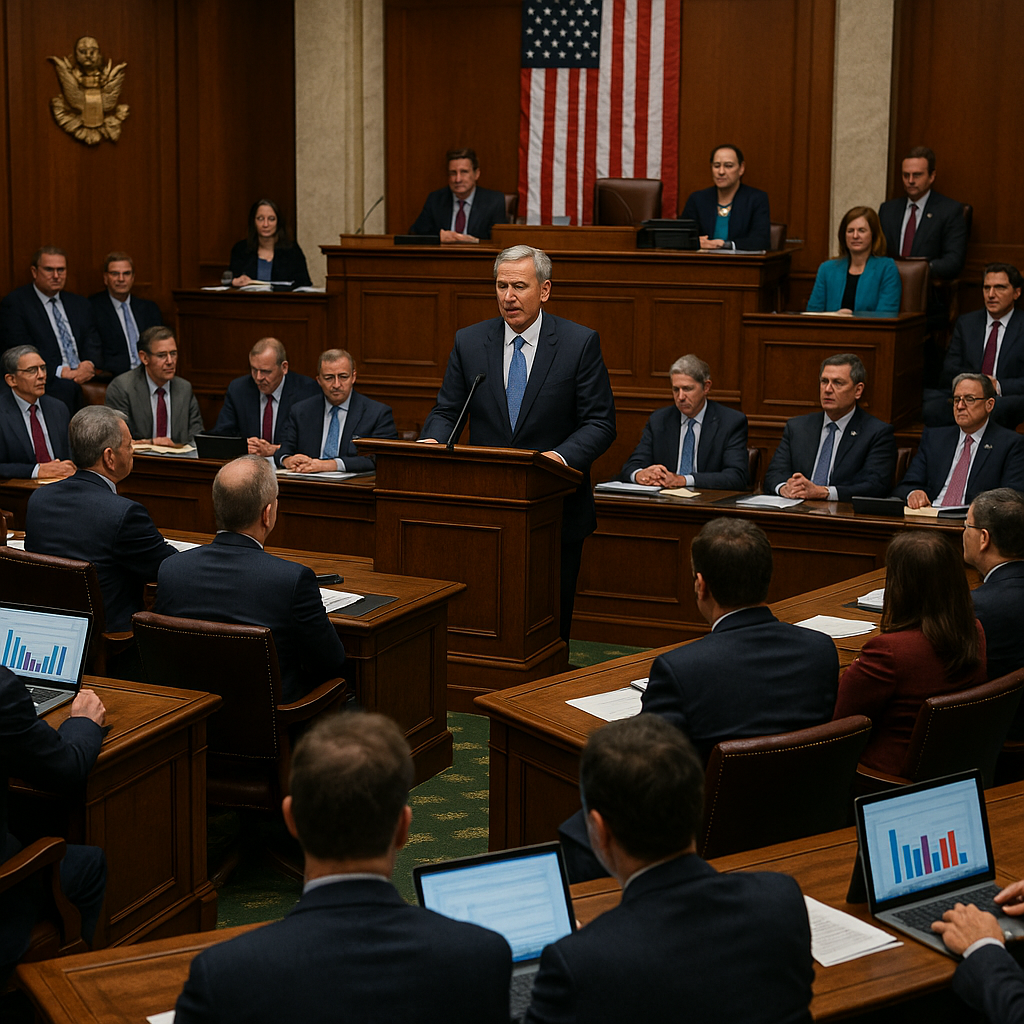Evolving AI policies set stage for next era of technology regulation
Technology and Innovation bills focus on AI’s potential to drive economic growth and maintain U.S. leadership in emerging technologies. This theme often intersects with national security priorities, especially in defense and competition with global powers.

- Country:
- United States
With the rapid proliferation of artificial intelligence applications, U.S. lawmakers are racing to shape policies governing its use. A recent study published in the journal AI & Society takes a deep dive into how AI is addressed in American legislative efforts.
The paper, titled "When AI Meets AI: Analyzing AI Bills Using AI," uses computational text analysis to decode patterns in over 200 AI-related bills and uncover the political forces shaping their content and tone.
How is the U.S. Congress addressing AI through legislation?
The study examines 204 AI-related bills introduced during the 117th and 118th U.S. Congresses, covering the years 2021 to 2024. This period saw an unprecedented surge in legislative activity around artificial intelligence, reflecting its rising significance in national debates. The research found that the House of Representatives has been more active than the Senate, introducing the majority of AI bills. This demonstrates the House’s greater engagement with AI oversight, administrative regulation, and public-facing concerns.
Party dynamics played a critical role in shaping these legislative efforts. Democrats sponsored the majority of bills, focusing on the ethical use of AI, public welfare, and education. Republicans introduced fewer bills overall but concentrated heavily on national security, defense applications, and risk mitigation. An independent legislator introduced one bill, showing the broad political interest AI has generated.
The legislative landscape is also marked by a clear temporal trend. Bill introductions spiked dramatically in 2023 and reached their peak in 2024, highlighting AI’s status as an urgent policy issue. This surge coincided with global developments in generative AI, autonomous systems, and heightened public awareness of both the opportunities and risks posed by the technology.
What are the main themes and partisan differences in AI policy?
Using topic modeling, the study identified five dominant themes running through the AI-related legislation: technology and innovation, government operations and content regulation, research and security, data governance, and healthcare applications. These categories reveal the breadth of AI’s impact and the variety of ways lawmakers are attempting to regulate it.
Technology and Innovation bills focus on AI’s potential to drive economic growth and maintain U.S. leadership in emerging technologies. This theme often intersects with national security priorities, especially in defense and competition with global powers.
Government Operations and Content Regulation emerge as another major focus, addressing how AI is used within federal systems and how digital content, especially from generative AI, should be governed. Lawmakers are increasingly concerned with misinformation, algorithmic transparency, and ethical deployment in public institutions.
Research, Education, and Security feature prominently in Democrat-sponsored legislation, which emphasizes workforce development, educational initiatives, and integrating AI securely into research environments. This aligns with their broader agenda of preparing society for AI-driven transitions.
Data and Digital Governance is a bipartisan concern. Both parties recognize the urgency of protecting personal data, setting standards for algorithmic accountability, and ensuring that digital platforms comply with transparent governance practices.
Finally, Healthcare and Human Services bills explore how AI can improve public health outcomes, from diagnosis to administrative efficiency, while safeguarding patient rights and ethical standards.
Partisan differences are evident in the focus and tone of these bills. Democrats emphasize societal benefits and ethical safeguards, while Republicans prioritize innovation and security. The House tends to adopt a regulatory stance, focusing on immediate oversight, whereas the Senate favors long-term strategic governance frameworks. This divergence underscores the complexity of AI policymaking, where ideological differences influence not only what is legislated but also how policies are framed.
What does the tone of AI legislation reveal about policymakers’ attitudes?
Sentiment analysis applied in the study provides a revealing look at how lawmakers frame AI issues. The findings show that positive sentiment dominates, accounting for nearly half of all legislative language. This reflects optimism about AI’s potential to drive innovation, economic growth, and national competitiveness. Many bills highlight the promise of AI in advancing technological leadership and improving public services.
Neutral sentiment appears in roughly one-third of the texts, suggesting a balanced, fact-based approach in many legislative discussions. These bills often aim to establish frameworks without leaning heavily toward either hype or fear.
However, negative sentiment, making up about a quarter of the analysis, signals persistent concerns about AI’s risks. These include ethical dilemmas, potential job displacement, privacy violations, and the threat of autonomous systems being misused. This caution is particularly visible in bills dealing with security and content regulation.
Interestingly, the study finds notable differences across chambers and parties. House Republicans display the highest proportion of positive sentiment, signaling strong enthusiasm for AI-driven innovation. Senate Republicans, on the other hand, exhibit the most critical stance, reflecting heightened concern about risks and governance challenges. Democrats’ sentiment tends to be balanced, coupling optimism with ethical caution.
This tonal variation underscores how political perspectives shape not only the content but also the language of AI policymaking. The study reveals that AI legislation is not just a technical matter; it is deeply entwined with partisan ideologies and institutional priorities.
The road ahead for U.S. AI governance
The research paints a complex picture of U.S. AI policymaking. The findings show that while there is bipartisan recognition of AI’s transformative power, legislative approaches diverge sharply along partisan lines and between the House and Senate.
The study underscores the need for cohesive governance frameworks that bridge political divides and balance innovation with responsibility. It also highlights the importance of international collaboration, as AI governance increasingly transcends national boundaries.
- FIRST PUBLISHED IN:
- Devdiscourse










